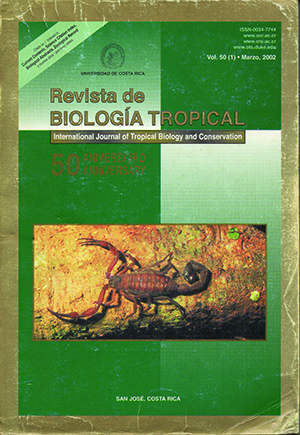Abstract
The relationship between the myrmecophytic tree Duroia hirsuta (Rubiaceae) and its associated, minute, non-aggressive Myrmelachista sp. (Formicinae) ants is poorly investigated, even though the small understory tree is surrounded by a conspicuos zone almost devoid of vegetation. As to the cause of these barely vegetated “Devil’s Gardens”, two alternative interpretations exist in the literature: the pruning activity of ants and allelopathy. We investigated the mutualistic Duroia-Myrmelachista system in the Ecuadorian Amazon, focusing on the phenomenon of the areas of reduced vegetation, as well as on the natural history of the associated ants. We conducted planting experiments and behavioral studies, including coccoids, the third partner in this mutualism. Because the well-studied Triplaris americana (Polygonaceae) possesses analogous vegetation free surroundings created by the assiduous mechanical pruning of its mutualistic ant partner (Pseudomyrmex sp.), parallel comparative investigations of this ant-plant association were conducted. The two systems are not equivalent; it was demonstrated that the remarkably inactive Myrmelachista ants are not responsible for the bare areas around Duroia plants. Instead, we regard allelopathy as the causative agent for the clear zones.##plugins.facebook.comentarios##

This work is licensed under a Creative Commons Attribution 4.0 International License.
Copyright (c) 2002 Revista de Biología Tropical
Downloads
Download data is not yet available.


